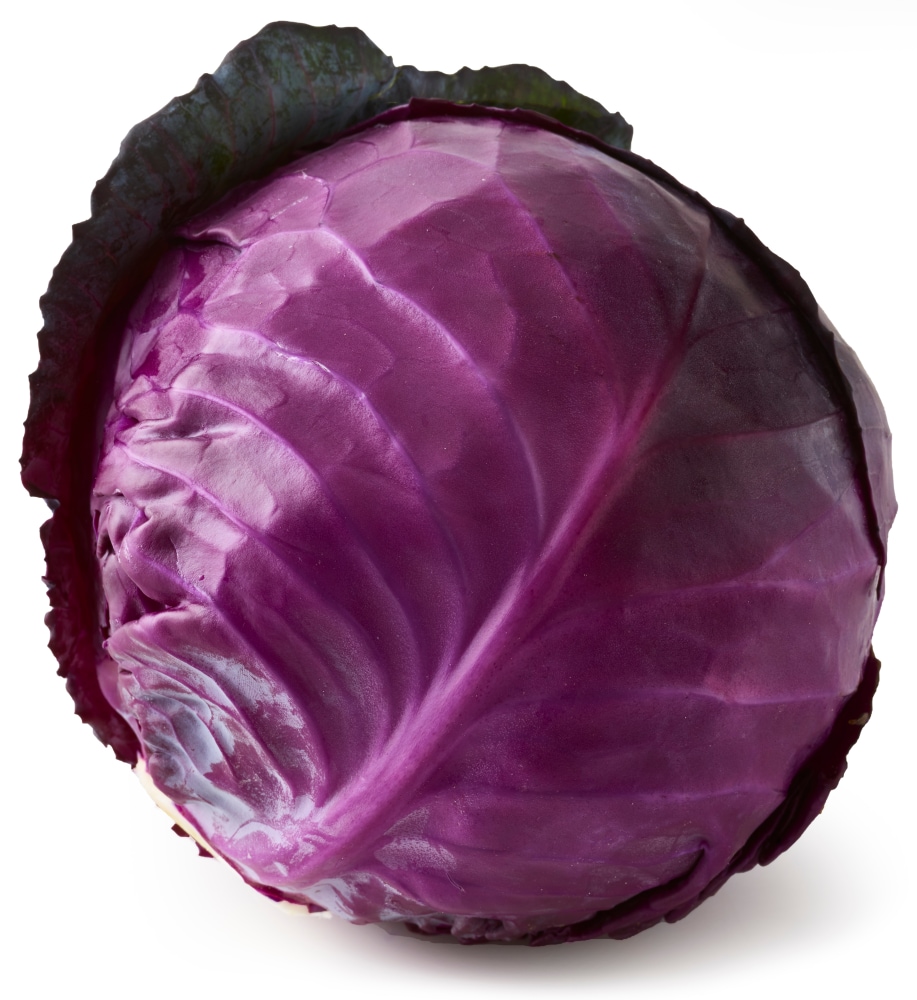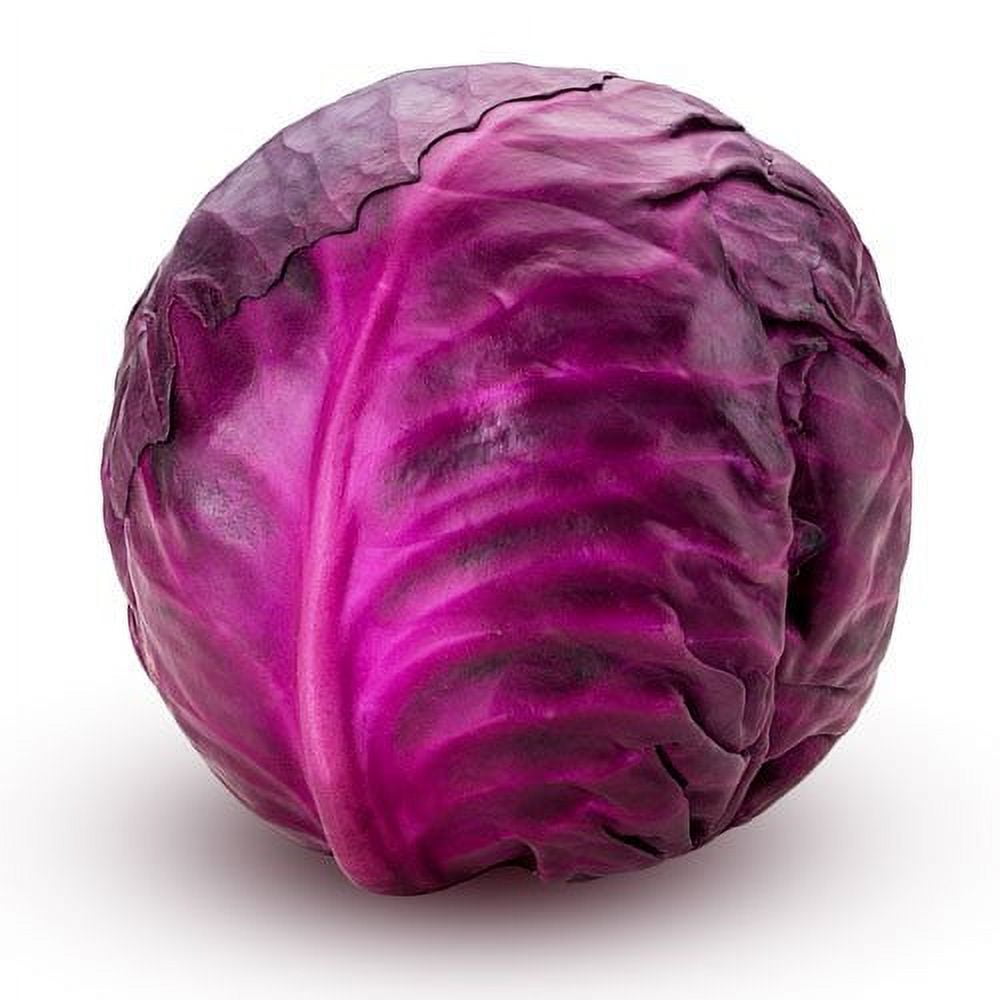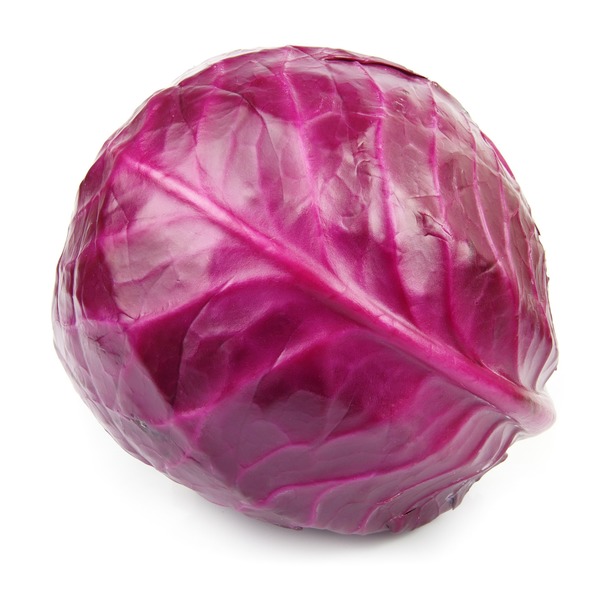SALADS
SIDE DISHES
APPETIZERS
Red Cabbage
Red cabbage, scientifically known as Brassica oleracea var. capitata f. rubra, is a nutritious and versatile cruciferous vegetable, recognized by its vibrant magenta-to-purple leaves. Native to the Mediterranean region, it is an essential addition to various cuisines around the world. Rich in dietary fiber, vitamin C, and other essential nutrients, red cabbage not only boasts visual appeal but also offers numerous health benefits.
This vibrant vegetable can be consumed in an array of dishes, whether consumed raw in salads and coleslaw or cooked in braises, stir-fries, and soups. Moreover, red cabbage is a common key ingredient in traditional fermented foods such as sauerkraut. With its pleasant peppery flavor and crunchy texture, red cabbage is a delight to both the palate and the eyes.
82%
CARBS
2%
FAT
16%
PROTEIN
139 Red Cabbage Products
Used In 87 Recipes
4
Quick Smoky Fish Tacos with Chipotle Mayo
5
Mexican Fiesta Bowl: The Whole30 Delight
3
Spiced Chicken and Avocado Energy Bowls
3
Flavor-Packed Salmon & Avocado Salad
2
Vibrant Fish Taco Bowls with Sweet Mango Salsa & Avocado Lime Sauce
3
Crunchy Apple & Mixed Greens Medley
4
Tropical Fish Taco Bowl Extravaganza
4
Zesty Lime Salmon with Crunchy Summer Greens and Peach Salsa
Red Cabbage Is Frequently Used With
Red Cabbage FAQ
When cooking with red cabbage, the most common question is often about its color change during the cooking process. This is due to the presence of a natural pigment called anthocyanin. Red cabbage tends to turn blue when cooked, to avoid this add acid (like vinegar or lemon juice) to your recipe. The intrinsic flavor of red cabbage could be quite peppery and intense. If you desire to mellow it down, cooking it long enough is the key. Longer cooking times tend to soften the strong peppery flavor. Another frequent mistake when cooking with red cabbage is not using it raw. Red cabbage has a great crunch and flavor that is often overlooked. If you want to get the most out of your red cabbage, use it in salads, sandwiches and slaws.
In addition to these cooking methods, red cabbage can also be pickled, fermented, or used in a slow-cooker recipe. The flavor of red cabbage pairs well with apples, red wine, cinnamon, balsamic vinegar, goat cheese and nuts among others. A little-known trick with red cabbage is that it can be used as a natural food color. The water used to boil red cabbage can be used as a natural purple dye for frosting, cloth and Easter eggs.
Why does red cabbage turn blue when cooked?
How can I reduce the peppery taste of red cabbage?
Can I eat red cabbage raw?
What pairs well with red cabbage?
Can I use red cabbage as a natural food color?
Do I need to remove the outer leaves of red cabbage?
How to cut red cabbage properly?
Can red cabbage be cooked in a slow cooker?
Can red cabbage be pickled?
How is red cabbage different from green cabbage?
Expiration & Storage Tips
When does red cabbage expire?
Raw, unopened red cabbage can typically last for about 2 weeks in the refrigerator. However, it's a good idea to look at the color, texture, and smell before you use it, especially if it's close to the two week point. Once it has been chopped or shredded, it can last for about 2 to 3 days in the refrigerator, as long as it is stored properly in a covered container. If you've made a dish out of it, such as coleslaw, that can last for 3 to 5 days in the refrigerator. As for the frozen red cabbage, it can last for up to 8 months in a freezer.
How do you tell if red cabbage is bad?
The most reliable ways to tell if red cabbage has gone bad are by looking at, smelling, and touching it. Red cabbage that's bad often has noticeable discoloration like a faded color or especially dark patches. You may also notice a strange or off smell if red cabbage is spoiling. Red cabbage should feel firm and robust, but if it starts to feel slimy or overly soft, it's likely past its prime. In any of these cases, it's best to discard the cabbage.
Tips for storing red cabbage to extend shelf life
• Always store red cabbage in the fridge. Try to keep it in the crisper drawer, as it needs a bit of humidity to stay fresh.
• Don't wash red cabbage before storing it. The moisture can make it spoil more quickly. Wash it just before you're ready to use it.
• Wrap whole red cabbage in plastic wrap to keep the outside from drying out and preserve its freshness longer.
• If you've chopped or shredded your red cabbage, store it in a sealed container. Adding a paper towel can help absorb excess moisture and keep the cabbage fresh for longer.
• Consider blanching and freezing red cabbage if you can't eat it all before it goes bad. Cut the cabbage into wedges, blanch in boiling water for two minutes, then plunge into ice water. Dry thoroughly before storing in freezer bags. Defrost in the fridge before using.
EXPIRES WITHIN
11 - 26
DAYS
Substitutes

Chinese Cabbage

Green Cabbage

Mini Cabbage

Savoy Cabbage

Shredded Green Cabbage

Shredded Red Cabbage

Shredded Lettuce

Rainbow Slaw

Lettuce Carrot Cabbage Blend

Asian Slaw
See All
Health Info
Macros
6g
CARBS
0g
FAT
1g
PROTEIN
Allowed on these diets
LOW FAT
HIGH CALCIUM
VEGETARIAN
KETO
PALEO
WHOLE 30
MEDITERRANEAN
LOW CARB
VEGAN
LACTOSE FREE
GLUTEN FREE
































